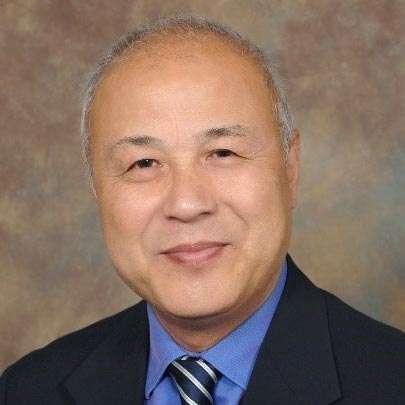2020 & 2022 Grantee: Xiaoyang Qi, PhD
University of Cincinnati
Research Project: Immunotherapy for Pancreatic Cancer by Saposin C-based Nanovesicles
Award: 2020 Pancreatic Cancer Action Network Translational Research Grant
Award Period: Sept. 1, 2020 – Aug. 31, 2022
Amount: $500,000
Award Extension: 2022 Pancreatic Cancer Action Network Translational Research Grant Extension funded by Kenneth D. Custance and Gladys C. Custance, honoring the memory of Martha ‘Molly’ Reed Woodroofe
Award Period: Sept. 2022 -- Aug. 31, 2023
Amount: $250,000

Biographical Highlights
Dr. Xiaoyang Qi received his PhD from Oklahoma State University in 1992. Dr. Qi is a University of Cincinnati Cancer Center member and professor of internal medicine in UC’s College of Medicine. Dr. Qi is also director of the Brain Tumor Modeling Program, the Brain Tumor Center, Gardner Neuroscience Institute, and a professor in the division of human genetics in the department of pediatrics and the biomedical engineering program in the College of Engineering, University of Cincinnati.
Dr. Qi’s research is focused on developing a novel SapC-DOPS nanovesicle (small sac to deliver drugs), which has the potential to offer a targeted, potent, broad and safe therapeutic agent for cancer patients. In preclinical studies, these stable nanovesicles have shown tumor-specific targeting activity and cancer-selective killing efficacy in various animal tumor models.
He has published more than 150 publications in peer-review journals and scientific abstracts. He is a senior member of National Academy of Inventors. A total of 18 patents have been issued, and more than 25 patents were filed in his name. The translational research in Dr. Qi’s laboratory has led to the development of BXQ-350 (SapC-DOPS) for the first-in-human clinical trials by Bexion Pharmaceuticals in the U.S.
Project Overview
An exciting area of research that has great potential for improving outcomes for pancreatic cancer patients is understanding the role of the immune system in fighting the disease. In normal circumstances, the immune system plays a key role in preventing the formation and growth of tumors. It is now well established that many cancers, including pancreatic cancer, generate a localized tumor microenvironment (TME) that allows the cancer to escape the normal immune surveillance system.
The overall objective of Dr. Qi’s proposal is to evaluate a new preclinical treatment for pancreatic cancer that directly reverses the TME immune suppression. The team’s studies show that pancreatic tumors secrete Heat Shock Protein 70 (sHsp70), which markedly stimulates the conversion of immune cells called macrophages to a polarized form that are immunosuppressive (block an immune response to the cancer cells).
Dr. Qi and colleagues have preliminary data that blocking sHsp70 with either neutralizing antibodies or with nanoparticles containing an agent, SapC-DOPG, completely reverses the immune suppression. In Aim 1 of this proposal, they will confirm that SapC-DOPG nanovesicles are specific to the cancer cells and cause minimal toxicity (side effects). In Aim 2, they will use pancreatic cancer mouse models to assess how SapC-DOPG nanovesicles affect sHsp70, macrophage polarization and tumor growth.
Importantly, as a variant of SapC-DOPG has already successfully completed a phase 1 trial in brain tumor patients, the results from this preclinical study in mice could be rapidly applied to humans.
Project Overview: 2022 Extension
Dr. Qi was the recipient of a 2020 PanCAN Translational Research Grant for a project focused on overcoming the challenges of effective immunotherapy treatment for patients with pancreatic cancer.
Many cancers, including pancreatic cancer, generate a localized tumor microenvironment (TME) that allows the cancer to escape the normal immune surveillance system. The goal of Dr. Qi’s project is to evaluate a new preclinical treatment for pancreatic cancer that directly reverses the TME immune suppression. Specifically, this experimental treatment strategy involves using nanodrugs called SapC-DOPG.
The Qi lab’s studies show that pancreatic tumors secrete Heat Shock Protein 70 (sHsp70), which markedly stimulates the conversion of immune cells called macrophages to a form that are immunosuppressive (i.e., they block an immune response to the cancer cells). At the time of his application, Dr. Qi had preliminary data showing that blocking sHsp70 with either neutralizing antibodies or with SapC-DOPG nanovesicles completely reversed pancreatic cancer cells’ ability to hide and shield themselves from an immune attack.
The first aim of Dr. Qi’s study is to confirm that SapC-DOPG nanodrugs are specific to cancer cells and cause minimal or no toxicity, or side effects in mice. Over the past two years, the Qi lab found that SapC-DOPG nanovesicles were well tolerated by mice in animal studies, and various tests revealed no indication of toxicity.
The second aim of Dr. Qi’s study is to use several pancreatic cancer mouse models to assess how SapC-DOPG nanovesicles affect tumor growth. The Qi lab’s experiments to date have been very promising, showing a 50-80% reduction in pancreatic tumor growth of preclinical mouse models. Unfortunately, the COVID pandemic impeded the team’s ability to conduct tests in other relevant animal models.
Based on the project’s promising results overall, Dr. Qi was awarded a one-year extension of his Translational Research Grant to test SapC-DOPG nanovesicles in a broader range of mouse models. In addition to assessing the size and growth of the tumor, they will also characterize the type of macrophages present (whether or not they impede an immune response) and measure the immune T-cell population (cancer-attacking cell type that immunosuppressive macrophages shield against) within the tumor site. The Qi lab will conduct their experiments in mice genetically programmed to develop pancreatic cancer as well as mice implanted with pancreatic cancer cells. By discovering how SapC-DOPG nanovesicles behave in various cancer models, the team will gain a better understanding of the treatment’s overall effectiveness – and the steps needed to move this treatment from the lab to the clinic.





